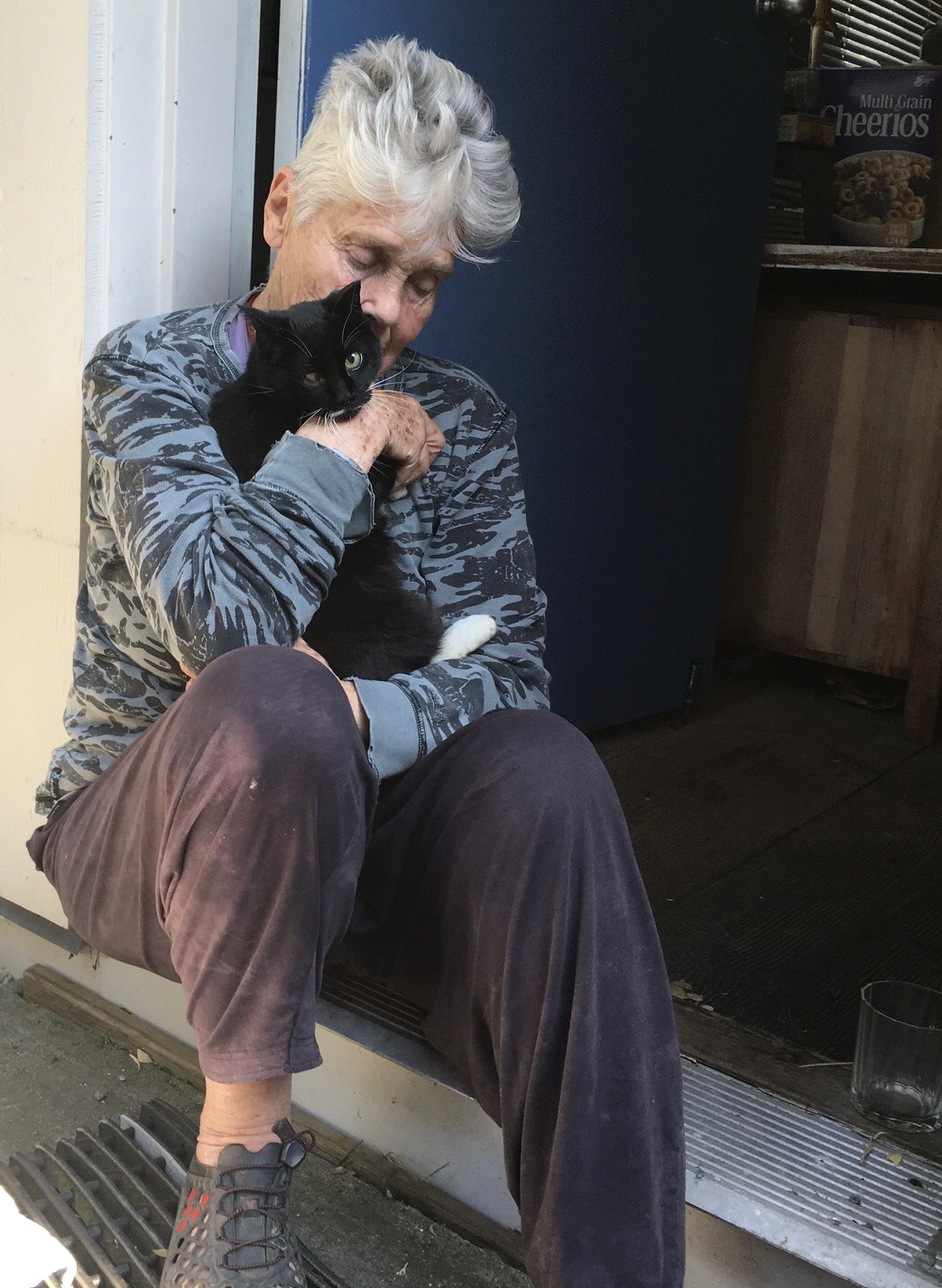
Celebrating 7 years of The Narwhal — and gearing up for the next 7
Between a fresh take on engagement and our new life on video, our team is...
Months before two Canadian railways faced allegations that their operations may have played a role in a devastating wildfire that destroyed the B.C. community of Lytton, a top shareholder urged the companies to be more aggressive in fighting climate change.
In November 2020, TCI Fund Management, a United Kingdom-based investment firm which describes itself as “value-orientated,” submitted shareholder proposals to both Canadian National Railway and Canadian Pacific Railway asking the companies to present climate action plans that disclose their current greenhouse gas emission levels and strategies to reduce emissions. TCI also asked the companies to give shareholders an “advisory vote” to approve the plans at upcoming annual general shareholder meetings.
Both resolutions passed with support from a high majority of shareholders. Both companies have committed to report emissions reduction progress annually and offer shareholders a non-binding vote on their climate action plans and any changes each year.
Despite taking such an activist approach to its investments, TCI has remained tight-lipped about new allegations, made in a proposed class action lawsuit, that heat or sparks from a freight train owned by CP and operated at the time by CN may have contributed to the Lytton blaze. Other top institutional shareholders in the railway companies have also declined to comment about the tragedy, which remains under investigation by the RCMP and the Transportation Safety Board (TSB), a federal agency.
The TSB launched an investigation into the role that a train may have played in the fire after the RCMP and BC Wildfire Service “raised concerns about the potential involvement of a freight train,” the federal agency says on its website.
The proposed lawsuit may only name the railways, but Carel Moiseiwitsch, the representative plaintiff and an artist who lost her home in the fire, wants to see action from shareholders as well.
“They should all get together and say ‘hey, what are we invested in? Why don’t we …put some pressure on them?’” she said. “They must have some leverage.”
Investors in both railway companies are set to receive dividend payments this fall. In July, CN announced its shareholders would be paid $0.615 per common share in September, while CP said a quarterly dividend of $0.19 per common share would be paid in October.
The Narwhal reached out to each of CN and CP’s top 10 institutional investors on the New York Stock Exchange for comment on the allegations against the companies. The Narwhal used an analysis by CNN Business as a reference for the list of top shareholders. Of those that responded, all declined to comment.
Spokespeople for Massachusetts Financial Services, 1832 Asset Management, and TD Asset Management, which invest in both companies, responded to say the firms had no comment on the Lytton situation. RBC Global Asset Management, which also invests in both railway companies, did not respond to The Narwhal’s request.
Among CN’s top investors, The Narwhal did not receive a response from the Bill & Melinda Gates Foundation Trust, or Caisse de dépôt et placement du Québec.
Jarislowsky Fraser, Wellington Management and The Vanguard Group responded to the request to say they would not comment. The Vanguard Group also shared links to its investment stewardship approach and a summary of its voting record on shareholder proposals.
Fidelity Investments Canada, WCM Investment Management, FIL Investment Advisors, and Egerton Capital, which all invest in CP, also did not respond to The Narwhal’s request. Fidelity Management & Research responded but did not comment on the Lytton fire allegations.


A number of the investors that did respond said their common practice is not to comment directly on their individual investment holdings.
While a company’s shareholders typically do not have a say in day-to-day management decisions and have limited liability in potential lawsuits, legal action against those companies, new climate-related laws and regulations, and physical damage to business infrastructure can all threaten the value of their investments.
“Anytime an operation is stopped because of an accident, anytime that there are potential reputation risks as a result of these kinds of accidents, it could have implications for the company’s shareholders,” said Shannon Rohan, the chief strategy officer with the Shareholder Association for Research and Education, or SHARE, a non-profit that promotes responsible investment strategies.
Essentially, that means investors have financial — as well as ethical — reasons to be concerned whether the companies they invest in are taking climate change seriously.
Ultimately, “climate change is forcing fundamental shifts in how companies do business,” Carol Liao, director of the Centre for Business Law at the University of British Columbia and co-lead of the Canada Climate Law Initiative.
And, shareholders can help those shifts along.
A company’s top investors in particular “have quite a voice,” said Liao and they can use it to push the companies they invest in to act on climate change.
TCI owns more than five per cent of the shares of CN and over eight per cent of CP’s shares, according to CNN Business. While the investment firm also declined to comment on the lawsuit, TCI is in the midst of publicly flexing its muscle as a major shareholder, over CN’s efforts to outbid CP and buy Kansas City Southern, a U.S. railroad.
Chris Hohn, TCI founder and managing partner, said in a Sept. 13 news release that “the bid for KCS exposed basic misunderstanding of the railroad industry and regulatory environment.”
The activist investor announced plans earlier this month to try to replace members of CN’s board of directors and ultimately have a new CEO installed.
In the latest release, TCI announced four nominees for the company’s board of directors as well as a new candidate for CEO and said it plans to call for a special meeting of shareholders shortly.
“We did not seek a proxy fight, but without urgent action CN’s operational and financial performance will continue to lag its peers under a Board that lacks the right railroad experience and operational expertise,” Hohn said in the release.
He added that if TCI’s nominees for directors are elected, the investor would continue to push CN on environmental, social and governance issues, such as working with partners in the industry to develop and introduce new low-emission locomotives.
In response to TCI’s earlier announcement that it was taking steps to have new board members elected, a CN spokesperson said in a statement that the company “values input from all of our shareholders. As we have done throughout the KCS process and as we always do, we will make carefully considered decisions in the interest of all of our shareholders and stakeholders and in line with our strategic priorities.”
Responding to the new statements from TCI, CN said it would comment further once it had received and reviewed a formal requisition for a shareholder meeting.
On Friday, CN released a new strategic plan, titled “Full Speed Ahead — Redefining Railroading,” which outlines goals to cut capital expenditures, increase shareholder profits, and make “structural improvements for the next generation.”
In a press release, CN board chair Robert Pace said he is “confident that CN’s senior management, a team of world-class railroaders who are focused on redefining the rail industry, have the skills and determination to lead the company into this exciting next phase.”
CEO JJ Ruest similarly expressed confidence in the company, saying in the press release that, “just as CN pioneered the industry’s focus on efficiency to increase reliability, we are now well-positioned to lead the industry through its next transformation by investing in the success of our customers, workforce and communities while delivering enhanced financial results.”
CN also highlighted some of its work on environmental, social, and governance issues, noting that it has set a goal to reduce its carbon intensity by 43 per cent and is an industry leader on fuel efficiency.
CN, however, declined to comment on the allegations in the civil suit, while stating that it is fully cooperating with investigations into the cause of the fire.
The company is “careful to operate at all times within applicable safety guidelines,” the statement said.
A spokesperson for CP said the company reviewed train records and relevant video footage and “found nothing to indicate that any of CP’s trains or equipment that passed through Lytton caused or contributed to the fire.”
CP did not provide any further details about the materials or video it has reviewed.
Andy Cummings, a spokesperson for CP, told The Narwhal in an email that “any conclusions or speculation regarding any cause of the Lytton fire or (contributing) factor remains premature,” given ongoing investigations by the TSB, BC Wildfire Service and the RCMP.
He added that Transport Canada inspected on July 6 the last train to pass through Lytton before the fire started and found no concerns or issues of non-compliance.
The Transportation Safety Board also says that it deployed an investigator to “gather information and assess the situation” on July 9 and that they inspected a train on July 10. This train had passed through Lytton on June 30, the day of the fire, the federal agency said. The board also noted that the train had been secured by the RCMP in Burnaby, B.C. beforehand, but it didn’t specify whether it found anything of interest during the July 10 inspection, nor did it indicate which company was operating this train.
The Lytton fire followed an extreme heatwave that “was virtually impossible without human-caused climate change,” according to a rapid analysis by scientists with the World Weather Attribution initiative.
Hundreds of people across the province died from heat exposure. But nowhere was as hot as Lytton, where temperatures at one point exceeded 49 degrees Celsius.
The fire, which started in the afternoon of June 30, caused an estimated $78 million in insured damage — a significant sum but one that can’t capture the full extent of the losses experienced by the community.
“We had the most perfect little house, which we had bought in quite a bad state of dereliction and renovated,” said Moiseiwitsch.
“The garden I had worked on for 10 years,” she said.
But all of it — the house, the many pieces of art she had created and one of her cats — was lost to the flames.

“All those people lost all their treasures and they’re not rich people…but they had their treasures,” she said of those affected in Lytton.
Jason Gratl, one of Moiseiwitsch’s lawyers, told The Narwhal that he has “received many calls from victims of the Lytton fire, who lost everything and are seeking legal recourse.”
But in order for the case to proceed as a class action it must first be certified by the court.
According to Klein Lawyers LLP, a class action can be certified if there’s “a lawful claim against a defendant,” a defined group of people who are affected, someone who can represent the group as the representative plaintiff, and the court sees it as the “preferable” procedure for claimants.
In the notice of civil claim filed with the Supreme Court of British Columbia on Aug. 18, Moiseiwitsch alleges the companies “knew or ought to have known” the conditions were unsafe for train operations.
Neither CN, CP, Transport Canada nor the Transportation Safety Board would confirm what cargo the train in question was carrying.
In the wake of the fire, CP donated $1 million to Lytton recovery efforts and also pledged to match employee donations.
“Our thoughts remain with all those affected by the devastating Lytton fire, including CP employees who lost their homes,” the statement said.
CN donated $1.5 million to the Lytton relief effort, promising to match employee donations as well.
“The safety of our employees and of the communities we live and work in is always our top priority,” a spokesperson for the company said in a statement.
The statement added that the company takes various steps in warming weather, including inspecting trains and rail equipment more often and slowing train speeds to mitigate risks.
The statement did not specify whether there were more frequent inspections or any additional efforts to slow down trains during the heat wave in late June.
Less than two weeks after the fire in Lytton started, federal Transport Minister Omar Alghabra, who is seeking re-election as a Liberal candidate in the Sept. 20 general election, moved to strengthen existing railway safety measures to prevent wildfires during extreme weather.
The new rules, which were enacted through a ministerial order, include requirements for Canada’s largest railways to reduce train speeds during periods of hot weather and extreme fire risk. The measures will remain in effect until the end of October.
The largest railways, including CN and CP, were also ordered to develop and implement Interim Extreme Fire Risk Mitigation plans within 14 days of the minister’s order outlining plans for fire detection, monitoring, and response.
Moving forward, Transport Canada will work with railway companies to strengthen fire risk mitigation measures permanently through regulations, a government news release said.
“I hope the lesson learned is that adaptations to coexist with fire in an era of changing climate are to better manage [or] maintain low vegetation cover along transportation corridors … and to stop running trains when fire weather indices cross life-threatening thresholds,” Lori Daniels, a forest ecologist at the University of British Columbia said in an email to The Narwhal.
Those thresholds must be defined and regulated, Daniels said.
Given the importance of Canada’s railways to the economy, she noted that a shift to nighttime or early morning schedules could be used to “avoid economic shut downs.”
For investors, doing their due diligence to understand how the companies they invest in are managing climate risks is key, Rohan said. And, Lytton is “really a testament to the impacts of climate change.”
When it comes to railways specifically, shareholders should evaluate the systems in place to prevent fires, mitigate the impacts if a fire is sparked, and remedy the situation, she said.
More broadly, investors should pay special attention to scenario planning, she added, to ensure companies are not underestimating the frequency and severity of extreme weather events and the risks they pose.
Companies that are working to adapt to climate change are using scenario analyses to help them prepare, Liao said.
Essentially, it involves developing different scenarios based on scientific climate models to understand the risks to a business and options to adapt to or minimize those risks. For instance, a business might consider how to adapt its operations to a future with more frequent and intense heat waves.
Ultimately, Liao said, it’s a matter of recognizing that “business as usual isn’t going to work anymore.”
“We know what will happen if we continue with business as usual, it’s just going to get worse and worse.”
In the last 15 years, climate-related events have increased insured losses by more than 400 per cent, Craig Stewart, the vice president of federal affairs with the Insurance Bureau of Canada, told The Narwhal.
“Whether it’s hail storms, fires, floods, windstorms, we’re seeing an increase in intense, severe weather across the country,” he said.
The effect overall is that “Canada is becoming a riskier place to do business,” he said, warning that businesses should be assessing the risks climate change poses to their operations.
Companies “operating industrial equipment in tinder dry forest” for instance, may need to reconsider how they manage those operations in the future, he said.
For businesses, understanding climate risks isn’t just a good idea, it’s part of fulfilling their legal and fiduciary duties, Liao said.
A company’s “directors and officers are obligated to consider climate related risks in all their decision making,” she said.
They also have an ethical responsibility to address climate change
Extreme weather events exacerbate existing social disparities in access to housing, food, and health care and disproportionately impact marginalized groups, Liao said.
“We can no longer ignore these realities.”
“Some industries are going to have to drastically change the way they operate and function if they haven’t already,” she said.
Updated Sept. 17, 2021 at 10:43 a.m. PT: This article was updated to add details about a new strategic plan released by CN on Sept. 17.
Get the inside scoop on The Narwhal’s environment and climate reporting by signing up for our free newsletter. On a warm September evening nearly 15...
Continue reading
Between a fresh take on engagement and our new life on video, our team is...

The public has a few days left to comment on Doug Ford’s omnibus development bill....

115 billion litres, 70 years to fix, $5.5 billion in lawsuits
